Obstacles faced by SMEs in CLMV
As part of our work for the Dutch Good Growth Fund #ClosingTheGap series, we analysed data from the World Bank’s Enterprise Surveys to understand the obstacles faced by small and medium-size enterprises (SMEs) in Cambodia, Lao PDR, Myanmar and Vietnam. In-depth country studies were undertaken in Cambodia, Lao PDR, Myanmar and Vietnam.
SMEs are not a homogeneous group. They report different obstacles and constraints – depending on their location, their size, and other characteristics. And these obstacles change over time.
Business obstacles by country and size
Access to finance is more often cited as a major obstacle in Myanmar and Viet Nam than in Cambodia and Lao PDR. Competition from informal businesses contrains SMEs in all the countries except Myanmar. An inadequately educated workforce is a problem in all the countries except Viet Nam. (In addition, a lack of unskilled labour is an issue unique to Lao PDR. See here and here for more.)
Cambodia
Small and medium-size businesses in Cambodia report similar business obstacles: practices of the informal sector, political instability and an inadequately educated workforce. However, a decade earlier the main problems faced by business were reported to be corruption and electricity supply.
Lao PDR
In Lao PDR, small and medium business face different constraints. While both complain of practices of the informal sector, small businesses are also more likely to be concerned with tax rates and electricity while medium-size businesses cite an inadequately educated workforce and transport as their major obstacles. In 2009, access to finance and tax rates were much more significant obstacles than they are now.
Myanmar
Small and medium businesses in Myanmar report similar constraints: an inadequately educated workforce, access to finance, and electricity. In addition, small businesses are concerned about access to land. However, access to land and electricity supply are not as severe as they were two years earlier.
Viet Nam
SMEs in Viet Nam report that they are particularly constrained by access to finance and practices of informal businesses. Small businesses also cite access to land and transport as obstacles, while medium businesses are somewhat concerned about tax rates. Transport is now less of an issue than it was in 2009, but generally the constraints have changed little since then.
Constraints faced by women entrepreneurs
Across the four countries, women own and/or manage a significant proportion of SMEs. Yet women-owned and managed businesses faced different, and additional, constraints compared with male-owned and managed businesses. Women are more likely to be illiterate and less likely to have completed primary and secondary education than men. This means they face greater challenges in business registration and obtaining and interpreting business regulations and information. Social norms can make it more difficult for women to interact with male government officials. Hence there may be a greater incentive for women-owned businesses to remain informal. Finally, women are time-poor because of obligations regarding the care of children and the elderly, and other household responsibilities.
In Cambodia, SMEs managed by women are more likely than those managed by men to cite practices of the informal sector and access to finance as their biggest obstacle. They are slightly more likely to cite political instability as their biggest obstacle. They are less likely to cite corruption and an inadequately educated workforce.
In Lao PDR, women-managed SMEs are more likely to cite access to finance (medium-size businesses), practices of the informal sector, and tax rates (small businesses) as their biggest obstacle, compared to male-managed SMEs. They are less likely to cite an inadequately educated workforce and transport.
In Myanmar, women-managed small businesses are more likely to cite electricity and tax rates as their biggest obstacle, compared with male-managed small businesses. Women-managed medium-size businesses are more likely to cite an inadequately educated workforce. Women-managed SMEs are less likely to cite access to finance than male-managed SMEs.
In Viet Nam, female-managed SMEs are more likely than male-managed SMEs to cite transport and practices of the informal sector as their biggest obstacle. They are less likely to cite access to finance and labor regulations at obstacles.
Related posts include SMEs’ use of financial products and further detail on their financing challenges. A comparison of Gazelles in Myanmar and Cambodia can be found here.
The Dutch Good Growth Fund/financing local SMEs is a “fund of fund” investment initiative from the Dutch Ministry of Foreign Affairs that aims to improve financing for the “missing middle” – i.e. entrepreneurs who have outgrown micro-finance but do not yet have access to conventional capital markets.
The Seed Capital and Business Development program aims to further the impact of DGGF by providing technical assistance , seed capital and business support services to intermediary funds and local SMEs. In addition, the program incorporates a knowledge development and sharing component that supports research, tests assumptions and shares insights on financing SMEs in developing countries and emerging markets – fostering industry-wide knowledge exchange.
The #ClosingtheGap series aim to improve common understanding of key challenges faced by entrepreneurs, notably the “missing middle” in the countries covered by the DGGF mandate. They are a tool to to facilitate and support local and international stakeholder’s efforts in setting the agenda in terms of SME development.

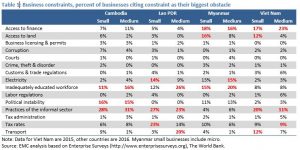
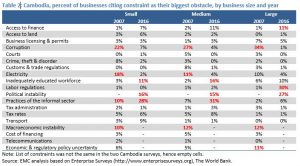

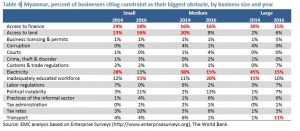
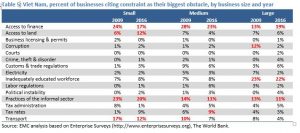
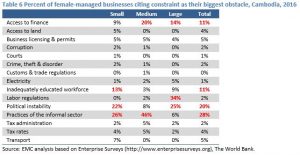
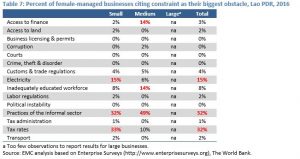
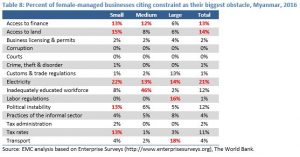
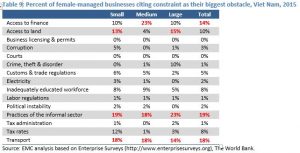
Comments are closed.